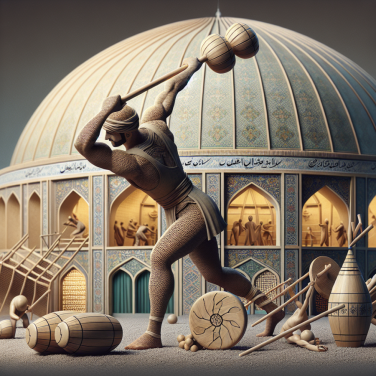From Ancient Civilizations to Modern Era: The Evolution of Soccer
The ancient origins of soccer can be traced back to the Chinese dynasty of Han (206 BC-220 AD). During their reign, a game named 'Tsu Chu,' in which participants kicked a leather ball filled with feathers and hair through an opening, barely larger than the ball was played. These games had strict rules, and the army often used them as part of their physical training.
Around 200 BC, the Romans played a game similar to soccer, known as 'Harpastum.' The game's objective was to overcome the opponent's defense to mark specific points on the ground. However, it was a lot rougher and more brutal than modern-day soccer.
Perhaps the most significant contention about soccer's origins lies between England and Scotland. Both countries claim to have given modern soccer its current form. The game ‘Mob Football’ in medieval England was an unorganized, chaotic event with unlimited participants. Unruly and violent, in some instances, it resulted in death. Many kings outlawed the game due to its violent nature.
Scotland, on the other hand, claims to have given soccer a more structured format. This refined version had a limited number of players, calculated strategies, and was less violent.
Turning more toward modern times, the formation of The Football Association in England in 1863 began to standardize the game, introducing the rules and format we recognize today. With designated positions, a defined field, and specific regulations on how the ball could be moved, soccer was becoming more strategic rather than merely a display of strength and stamina.
In the 20th century, professional leagues began forming worldwide, starting with England's Football League in 1888. FIFA (Fédération Internationale de Football Association) was founded in 1904 in Paris, and it has been governing international competitions ever since. In 1930, FIFA organized the first World Cup that's now celebrated every four years.
Moreover, the introduction of technology has significantly impacted the game. The implementation of Video Assistant Referee (VAR) technology allows referees to make more accurate decisions, and there's ongoing research to develop smart, IoT connected balls and stadiums to improve players' performance and spectators' experience.
Finally, women's soccer deserves a special mention. Women’s soccer has faced many hindrances throughout its evolution. The first recorded women's soccer match took place in 1895, but it wasn't until 1921 that the English Ladies Football Association was formed.
Read also:
Varzesh-e Pahlavani: The Ancient Sport of Persian Warriors
Tracing the History of Soccer: Unearthing the Game's Roots
Soccer, colloquially referred to as football in many parts of the world, is indubitably one of the most popular sports today, with a wide audience spanning across different age groups and nationalities. To fully appreciate the sport, it is advisable to delve into its intriguing historical backdrop.
Ancient Roots
Attempting to track soccer’s origins can lead to a labyrinth of various games played throughout history—games that bear a certain resemblance to modern-day soccer. Some of the earliest instances can be traced back to ancient civilizations. For example, ancient China gave birth to a game called “Cuju,” a sport which required players to kick a ball made from leather into a small hole. This game, played around 2,000 years ago during the Han Dynasty, has since been recognized by FIFA as the earliest form of soccer.
The Greeks and Romans had their versions of football too. The Greeks played “Episkyros,” where they used a ball made out of inflated pig's bladder and tried to cross it over a goal line. The game involved both kicking and handling the ball. On the other hand, the Romans played “Harpastum”— a game rather similar to rugby than soccer. However, it did involve some kicking and was popular among the Roman military.
Influence of Mob Football
However, many historians argue that soccer's true origination point can be found in medieval Europe, particularly from a chaotic and often violent game known as "mob football." Played during annual Shrove Tuesday festivities, participants within entire towns or villages would wrestle, run, kick, and brawl to drive an inflated animal's bladder from one pre-determined point in town to another. Rules were virtually non-existent, and the frenzied activity often resulted in injuries, causing Edward II of England to ban the game in 1314.
Birth of Modern Soccer
The transition from medieval mob football to a more organized and less violent sport took place in England in the 19th century. Industrialization played a major role in this evolution. Working-class individuals had more leisure time, which increased the demand for organized sports. In 1863, the Football Association was formed in London, standardizing the rules of the sport. The decision to prohibit the use of hands in the game resulted in a split in the association, with dissenting members creating Rugby Football.




